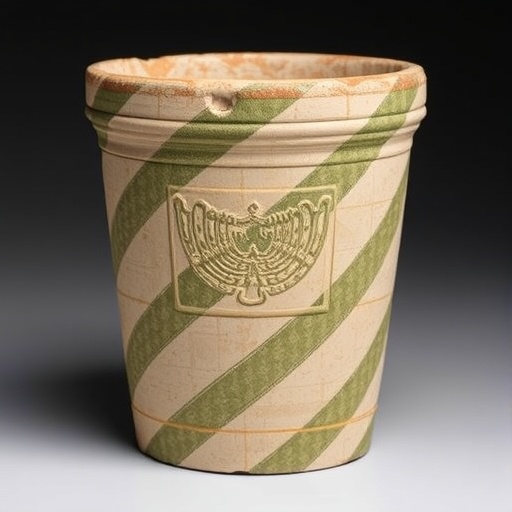A groundbreaking study has emerged from the in-depth analysis of Postclassic Xochimilco ceramic sherds, shedding light on ancient food preparation techniques that utilized lime treatments. This research, spearheaded by Hernández-Grajales et al., opens a window into the culinary practices of a society that thrived in what is now modern-day Mexico. With a focus on how lime, a key ingredient derived from calcined limestone, influenced food processing, the findings not only enrich our understanding of Postclassic Mesoamerican gastronomy but also underscore the technological sophistication of its people.
The significance of lime in food preparation can be traced back to its multifaceted role in enhancing flavors and nutritional benefits. Lime treatment, known as nixtamalization, involves soaking or cooking corn in an alkaline solution which can significantly improve the bioavailability of nutrients such as niacin. This ancient method is believed to have origins that predate written history, yet its application within the Xochimilco region remains a notable focal point of this research.
Ceramic sherds are precious artifacts that provide invaluable insights into ancient cultures and culinary practices. The researchers meticulously examined these shards, applying various scientific techniques to determine the presence of lime residues. Their analytical methods included scanning electron microscopy, X-ray diffraction, and chemical composition analysis, ensuring a comprehensive understanding of how lime was utilized in food processing techniques during the Postclassic era.
The study of these ceramic artifacts reveals that the practice of lime treatment extended beyond mere food preparation. It served as a catalyst for social and economic interactions among the communities inhabiting the Xochimilco region. The researchers found that these techniques contributed to the development of trade networks, facilitating not only the exchange of food items but also cultural knowledge surrounding agricultural practices.
In addition to the archaeological significance of these findings, the research highlights the broader implications for modern agricultural practices. Understanding ancient methods of food preparation can inspire contemporary approaches to combat malnutrition and food scarcity. The historical context provided by this study illustrates how Mesoamerican societies innovatively harnessed local resources to enhance their diets, an approach that could inform current sustainable practices.
The researchers also emphasize the linkage of culinary practices with environmental adaptation. The Xochimilco area, characterized by its unique wetland ecosystem, provided ample resources for communities to explore diverse food production methods. The role of lime in this process not only enhanced corn processing but also allowed for the incorporation of various indigenous plants, contributing to a more varied and nutrient-rich diet.
As the study garnered attention, it sparked discussions on the importance of preserving traditional food practices that have been handed down through generations. The insights gained from these ceramic sherds reinforce the need for cultural appreciation, encouraging a deeper investigation into ancient diets that have shaped modern culinary experiences. It also raises questions about how such practices can be revitalized in today’s society, promoting a resurgence of local ingredients and traditional preparation methods.
Moreover, the findings of Hernández-Grajales et al. illuminate the interconnectedness of agriculture, culture, and society. As communities navigated the challenges of their environment, the use of lime in food preparation became emblematic of their ingenuity. It serves as a reminder that food is not merely sustenance; it encompasses a tapestry of cultural identities and histories that deserve recognition and celebration.
In conclusion, this study is more than a mere examination of ancient food practices; it is an exploration of how communities adapted to their environments and cultivated their culinary traditions. The legacy of lime treatment in food preparation is a testament to the technological advancements of the Postclassic Xochimilco society. The research findings not only deepen our understanding of historical gastronomy but also carry crucial lessons that resonate with contemporary food systems, emphasizing sustainability and cultural continuity.
Now, as we reflect on the rich tapestry of Mesoamerican food history, we are reminded of the intricate relationship between ancient peoples and their environment. This research serves as a guidepost for current and future investigations into the past, paving the way for further discoveries that may enrich our understanding of human civilization and its enduring connection to food.
Indeed, the exploration of lime treatments in food preparation highlights a tradition that deserves to be celebrated and preserved. It challenges us to recognize the significance of our culinary heritage and the importance of sustaining the knowledge transmitted through generations. As we delve into the past, we find not just relics of history, but robust traditions that continue to nourish our present and future.
With the ongoing excitement surrounding the study, there is a palpable sense of enthusiasm in the academic community. As the quest for understanding ancient human behavior and cultural practices continues, Hernández-Grajales and their colleagues have opened a door to further research that could reshape our perceptions of historical foodways.
The success of this research signifies not only a triumph in understanding the past but also a clarion call for nurturing future food systems grounded in respect for cultural heritage and biodiversity. By appreciating the innovative practices of ancient civilizations, we can cultivate a more sustainable and equitable future in the realm of food production and preparation.
As we look ahead, let us carry forth the lessons drawn from the culinary practices of ancient Mesoamericans, fostering a connection to our past that enriches our understanding of culinary arts in the present and beyond. The implications of this work extend far beyond ancient history, offering a roadmap for reimagining the ways we engage with food in our modern lives.
Subject of Research: Lime treatments for food preparation in Postclassic Xochimilco (Mexico).
Article Title: Lime treatments for food preparation identified in Postclassic Xochimilco (Mexico) ceramic sherds.
Article References:
Hernández-Grajales, M., Barba, L., García-Granero, J. et al. Lime treatments for food preparation identified in Postclassic Xochimilco (Mexico) ceramic sherds.
Archaeol Anthropol Sci 17, 209 (2025). https://doi.org/10.1007/s12520-025-02314-3
Image Credits: AI Generated
DOI: https://doi.org/10.1007/s12520-025-02314-3
Keywords: Lime treatments, Postclassic Xochimilco, food preparation, nixtamalization, ancient culinary practices, ceramic analysis, sustainable agriculture.




